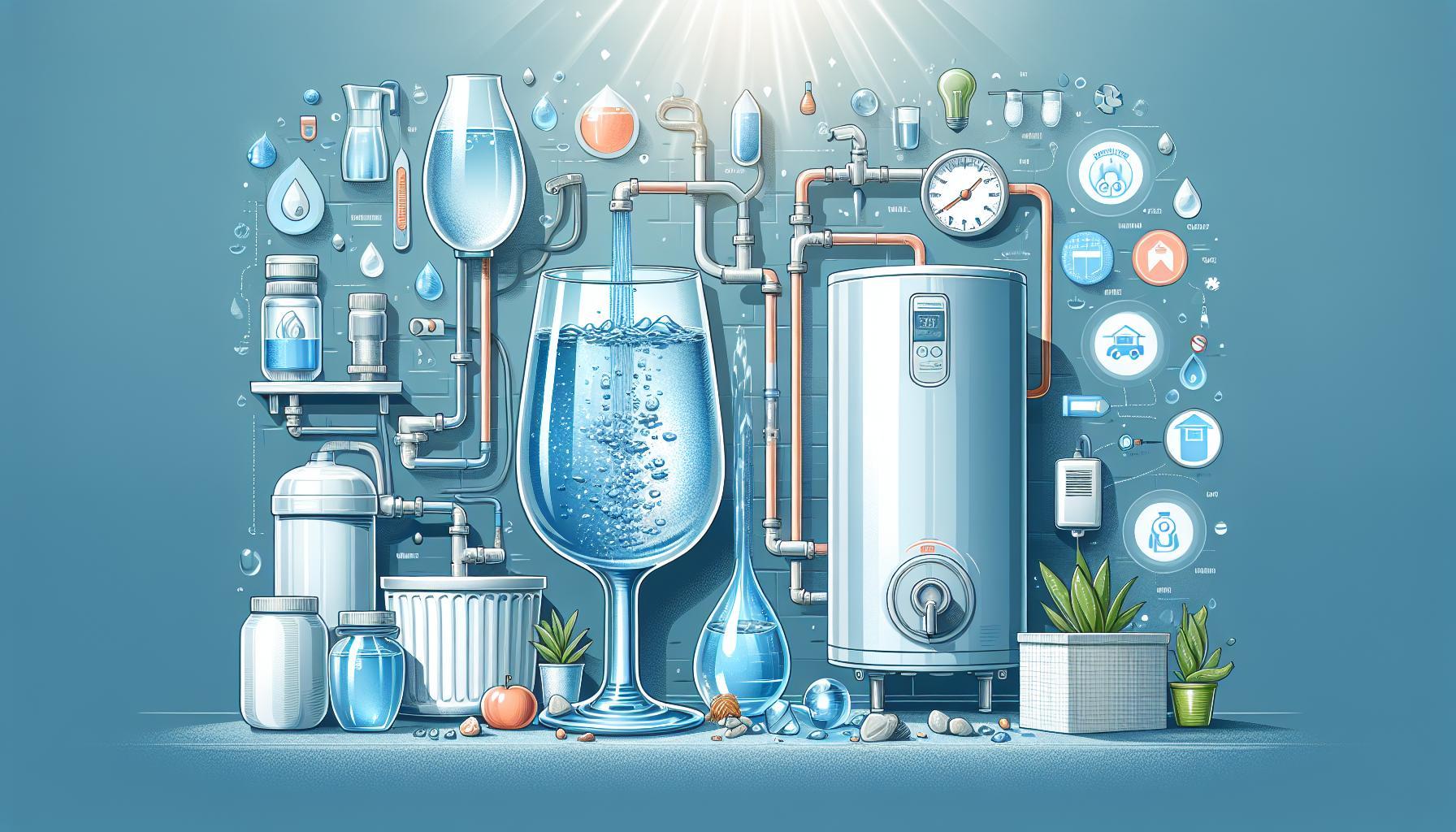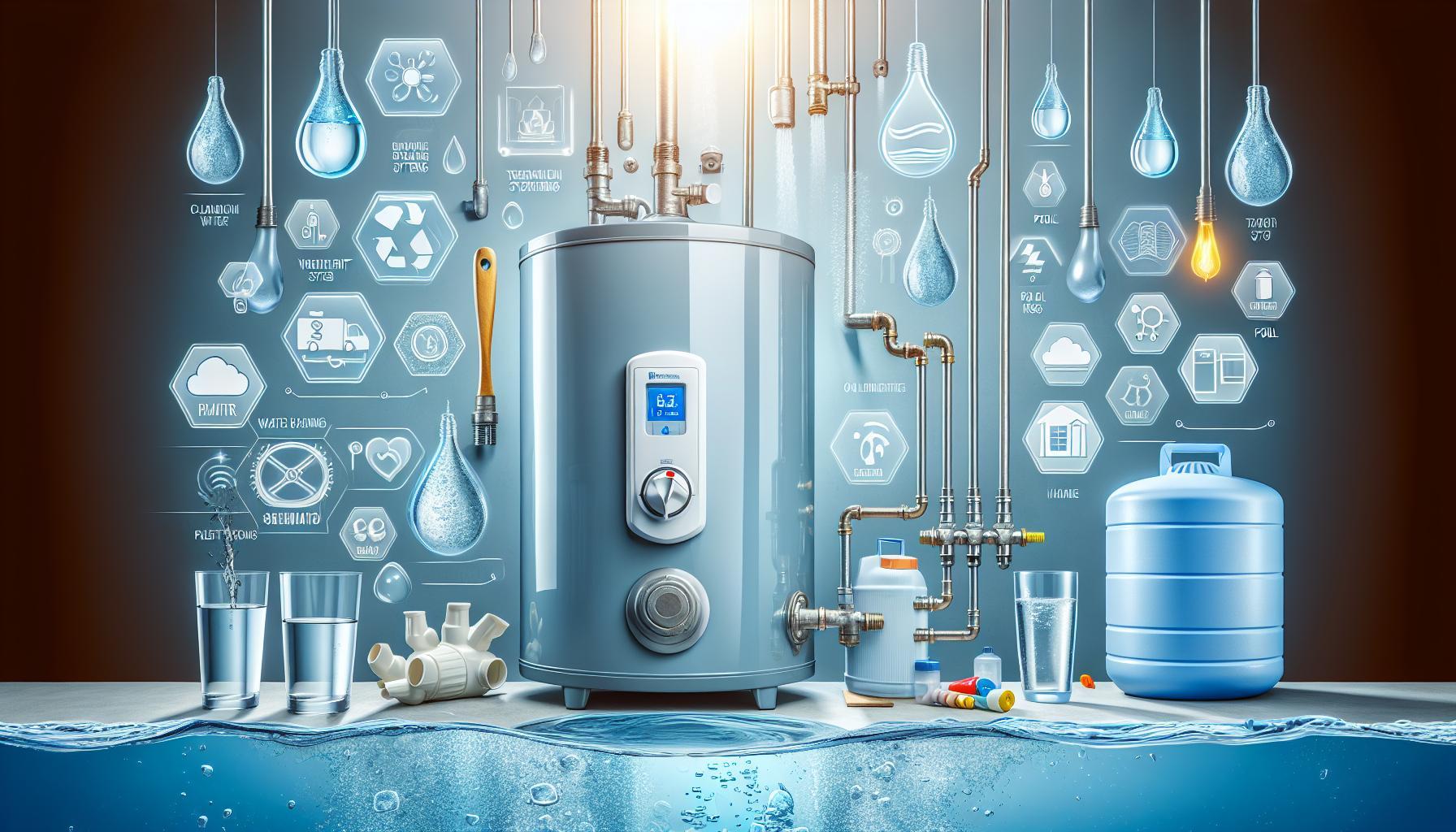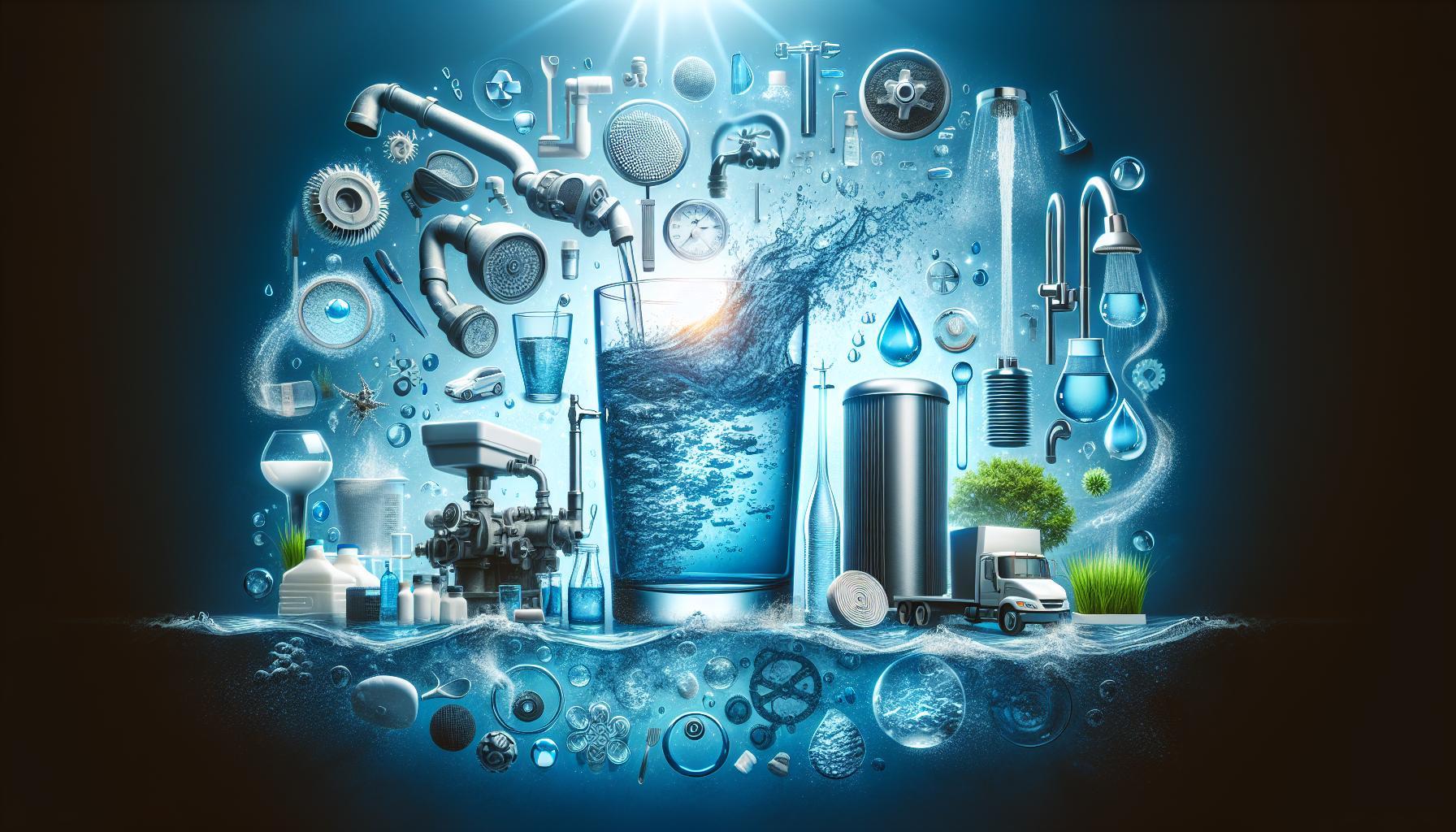Finding your water heater can seem like a daunting task, especially when it’s often hidden away in less accessible areas of your home. Understanding common locations for these essential appliances is crucial not only for maintenance but also for optimizing their efficiency. This guide will help you quickly locate your water heater and ensure it operates at its best, keeping your home comfortable and your hot water flowing smoothly.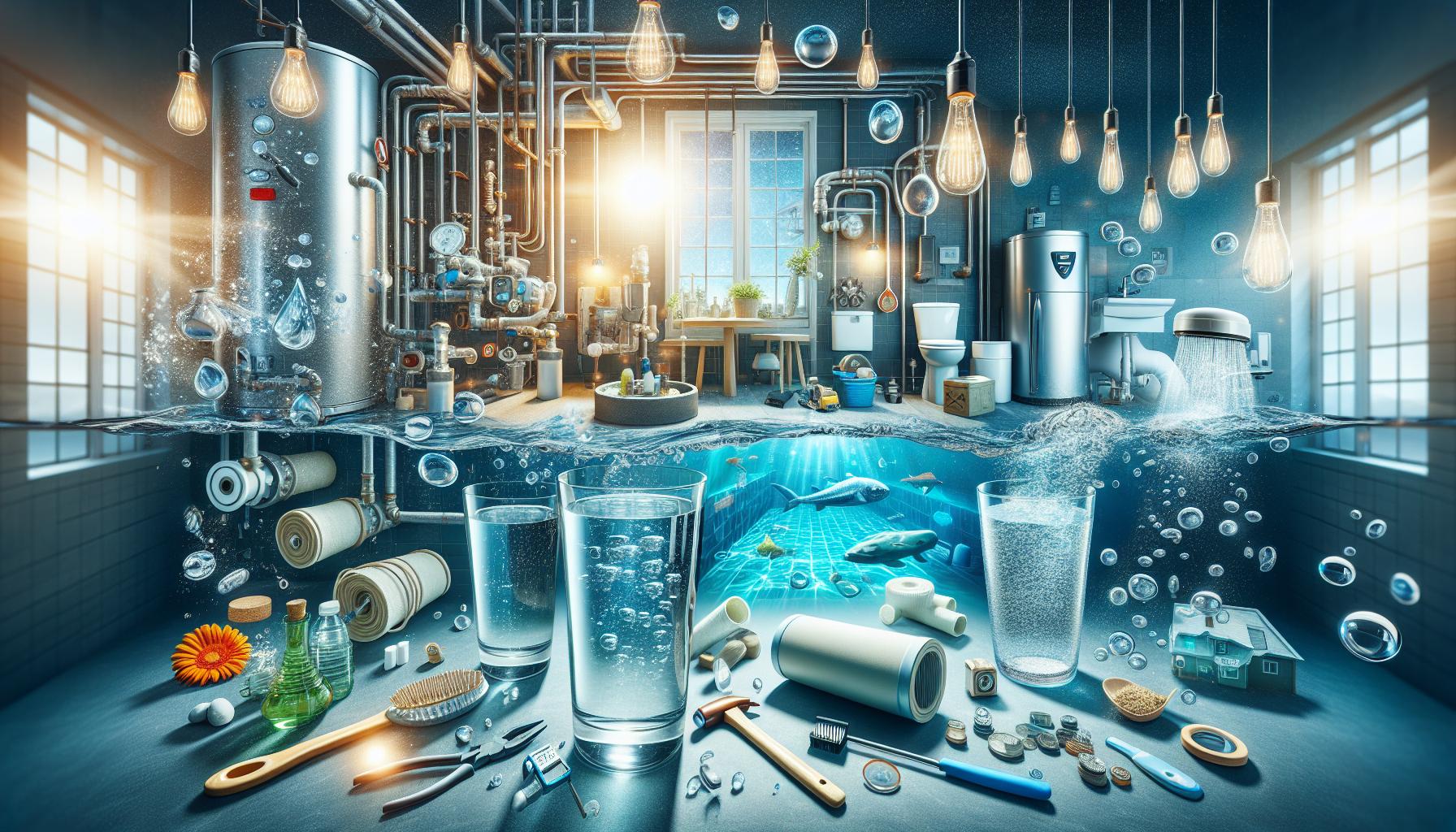
Common Locations for Water Heaters in Homes
Locating your water heater can often feel like a scavenger hunt, especially if you’re unfamiliar with your home’s layout. Understanding where water heaters are typically installed is crucial for efficient maintenance and timely troubleshooting. These appliances, which are essential for providing hot water throughout your home, can be found in several common areas, each with its own advantages and disadvantages.
Common Areas for Water Heaters
The positioning of water heaters varies based on home designs and personal preferences. Here are the most common locations where you might find them:
- Basement: One of the most frequent spots for water heaters is in the basement. This area often has ample space and is away from daily living activities. However, if your basement floods, it could pose a risk to the appliance.
- Garage: Many homeowners opt to install their water heater in the garage. This location keeps the unit accessible and offers protection from freezing temperatures in colder climates. Nonetheless, ensure that the garage is well-ventilated to prevent heat buildup.
- Utility Room: In more modern homes, utility rooms or closets are often designed specifically for plumbing and HVAC equipment. This helps keep the water heater hidden while ensuring easy access for maintenance.
- Attic: Some builders place water heaters in attics to save space. While this can effectively use vertical areas in the home, it can be challenging to access and might result in higher repair costs if leaks occur.
Identifying Your Water Heater Location
If you’re unsure where your water heater is located, a systematic approach can make the search easier. Start by checking your home’s floor plan if you have one, as it may indicate common areas designated for utilities. Pay attention to spaces near plumbing fixtures, especially bathrooms and kitchens, where water lines are most concentrated. Remember, it’s often a good idea to occasionally inspect these locations for any signs of wear or leakage, maintaining the efficiency of your home’s hot water system.
Feel free to take notes of any maintenance issues you notice, as this information may be helpful when consulting a professional. Keeping your water heater in prime condition is not only vital for reliable hot water service but also extends its lifespan, ensuring that you can find it quickly when needed.
How to Find Your Water Heater: A Step-by-Step Guide
Finding your water heater can feel like looking for a needle in a haystack, especially if you’re not familiar with the layout of your home. Knowing where to look is crucial when you need to perform maintenance, make repairs, or just need to check the temperature settings. Water heaters can be tucked away in various places, often hidden from plain sight. Here’s a straightforward guide to help you locate yours quickly and efficiently.
Start with the Common Areas
In most homes, water heaters are typically found in specific locations. Begin your search in these common areas:
- Basement: Many homes have their water heaters installed in the basement, especially if they are equipped with a traditional tank. If your home has a basement, check for any enclosed spaces or corners.
- Utility Room: Some houses feature a utility room, which often houses the water heater along with other appliances. Look for a dedicated cupboard or closet.
- Garage: If your home has a garage, the water heater may also be located there. Check any wall-mounted areas or find a designated corner for appliances.
- Attic: In certain homes, particularly those with limited space in other areas, you might find the water heater in the attic. Ensure you have proper access and safety gear before checking.
- Closets: Smaller homes may have water heaters located in closets. This is often the case with tankless water heaters.
Consider Your Home’s Age and Type
The age and type of your home can significantly influence where the water heater is installed. Older homes may have different setups compared to modern ones due to changing building codes and practices. Here’s what to keep in mind:
| Home Type | Common Water Heater Locations |
|---|---|
| Single-Family Homes | Basements, Garages, Utility Rooms |
| Townhouses | Utility Closets, Garages |
| Apartments | On-demand units in kitchens or closets |
Check for Indicators
When searching for your water heater, look for signs that may lead you to its location. Here are a few indicators:
- Hot Water Pipes: Follow the hot water pipes from your faucets; they will lead back to the water heater.
- Vent Pipes: Many gas water heaters have a vent pipe; spotting this can indicate nearby water heater placement.
- Tanks or Hoses: If you notice any water connections or hoses in your home, they may be associated with a water heater, revealing its location.
By exploring these areas and considering your home’s unique features, you can efficiently track down your water heater, allowing for quick access whenever it’s needed. Whether you’re performing a routine check or looking for troubleshooting information, knowing where to find your water heater is essential for effective home maintenance.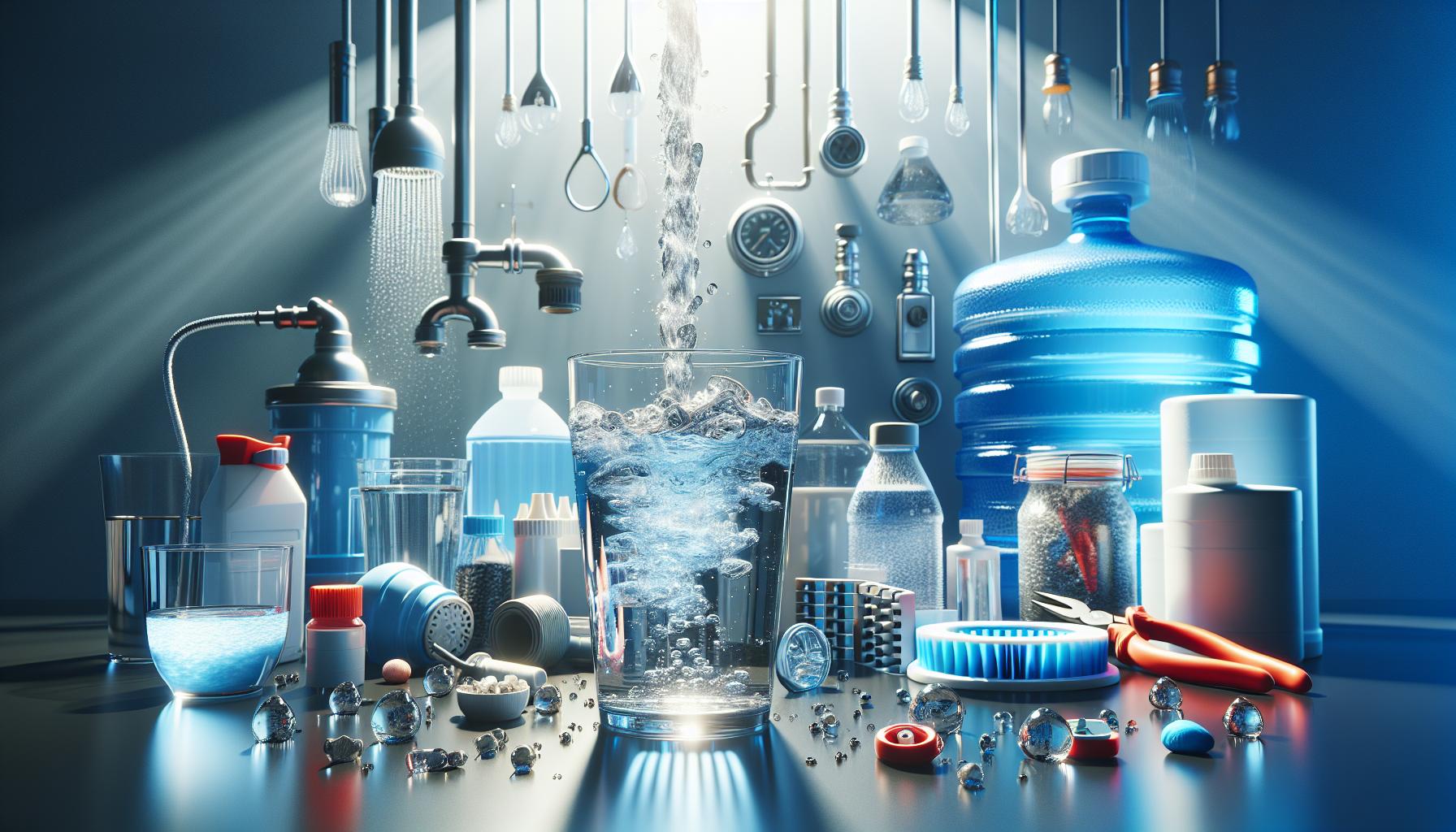
Signs Your Water Heater Might Be Out of Sight
When it comes to home maintenance, the water heater often lurks in the shadows, overlooked until something goes wrong. Knowing the signs that your water heater might be malfunctioning is crucial for preventing bigger problems down the line. While finding its exact location can be tricky, understanding its performance can save you time and money.
Unusual Sounds
It’s not uncommon for a water heater to make some noise as it heats water, but if you start hearing loud popping, rumbling, or banging noises, it is a clear indication that something is amiss. These sounds can be caused by sediment buildup at the bottom of the tank, causing the water to boil and create pressure. If left unaddressed, this can lead to leaks or even tank failure.
Water Discoloration
If your hot water emerges from the tap with a rusty or brownish hue, this is often a telltale sign that you might have corrosion inside your water heater. Rusty water can not only affect your plumbing but is also a clear indicator that the lifespan of your water heater is dwindling.
Temperature Fluctuations
Are you experiencing inconsistent water temperatures? This could mean your water heater is struggling to maintain the desired heat, which might be due to a failed thermostat or an issue with the heating element. Regularly check the temperature by running the hot water and seeing if it matches your expectations.
Additional Warning Signs
Keep an eye out for these additional symptoms to determine if your water heater’s days are numbered:
- Leaks or puddles: Any visible leaks around the base of your water heater can indicate failure.
- Increased energy bills: A malfunctioning unit often works harder, raising your energy costs.
- Aging unit: Most water heaters last around 8-12 years; if yours is approaching this age, it may be time to consider a replacement.
Recognizing these signs early can ensure that you address issues before they escalate, ultimately helping you find your water heater’s location and troubleshoot effectively. If you suspect any of these issues, it is advisable to consult a professional to evaluate and potentially replace your water heater.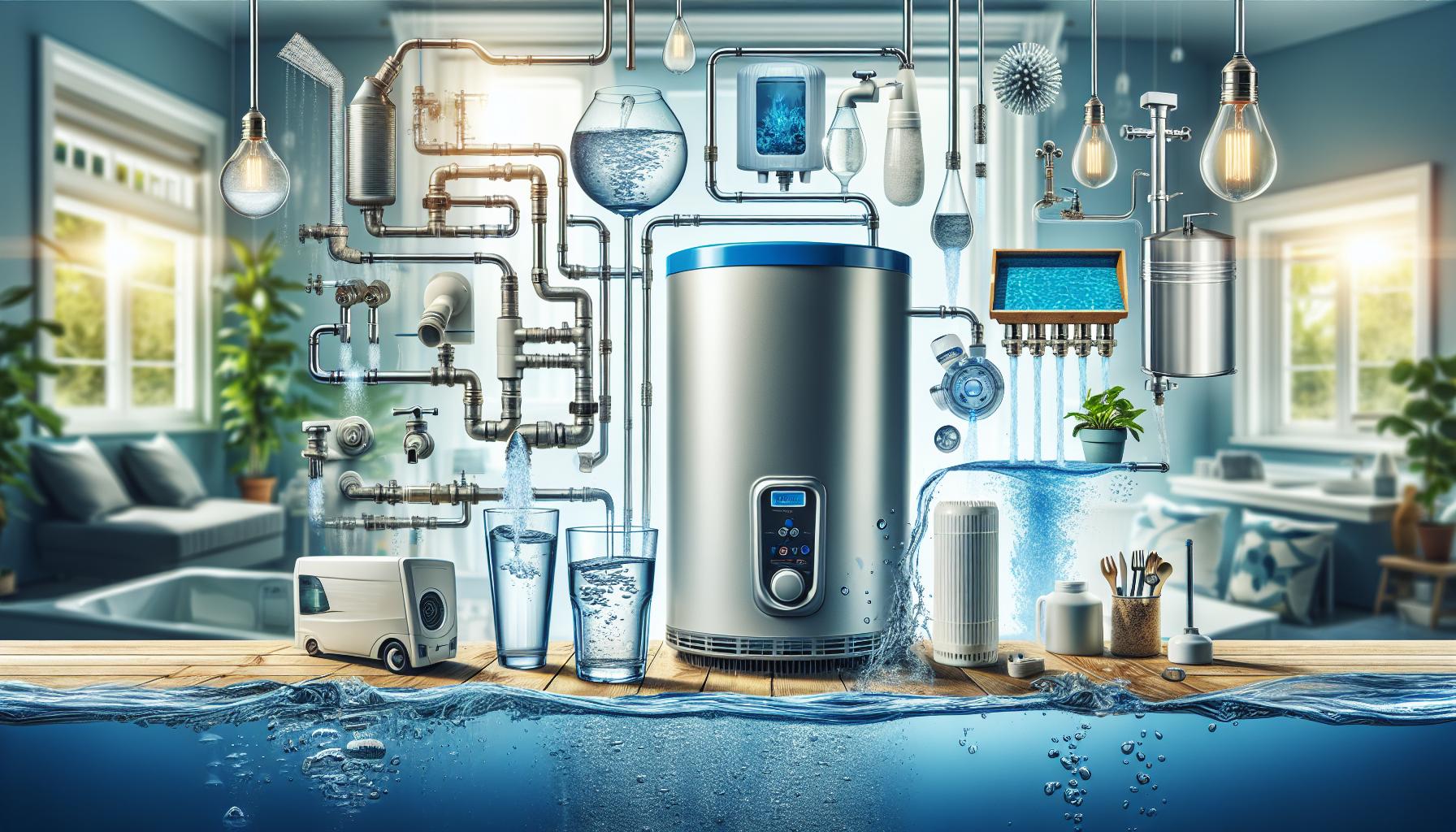
Understanding Different Types of Water Heaters and Their Placement
Understanding the various types of water heaters and their appropriate placement is crucial for both efficiency and convenience in the home. Water heaters are typically categorized into two main types: tank and tankless. Each type has its specific advantages and ideal locations, which can significantly impact their performance and your hot water experience.
Types of Water Heaters
1. Tank Water Heaters: These are the traditional water heaters that store a specific amount of hot water. They provide a consistent hot water supply but can take up considerable space. Ideal locations for tank water heaters include:
- Basements
- Utility rooms
- Homes with large installations like blankets or space for expansion
2. Tankless Water Heaters: Also known as on-demand water heaters, these units heat water as needed, eliminating the need for a bulky storage tank. They are much more efficient and occupy less space, making them suitable for various placements such as:
- Wall-mounted in kitchens
- Under sinks
- Near appliances requiring hot water
Considerations for Placement
When determining the placement of your water heater, several factors should be taken into account:
- Ventilation: Gas water heaters require proper ventilation to expel exhaust gases.
- Accessibility: Ensure the heater is easily accessible for maintenance and repairs.
- Proximity to Water Outlets: Placing the heater close to bathrooms and kitchens can reduce heat loss and improve efficiency.
In addition to these type distinctions, understanding the optimal placement helps in addressing the question, “Where are water heaters located in homes?” This knowledge not only assists in securing adequate space but also ensures that your heating system operates effectively, meeting your household’s hot water demands swiftly and reliably.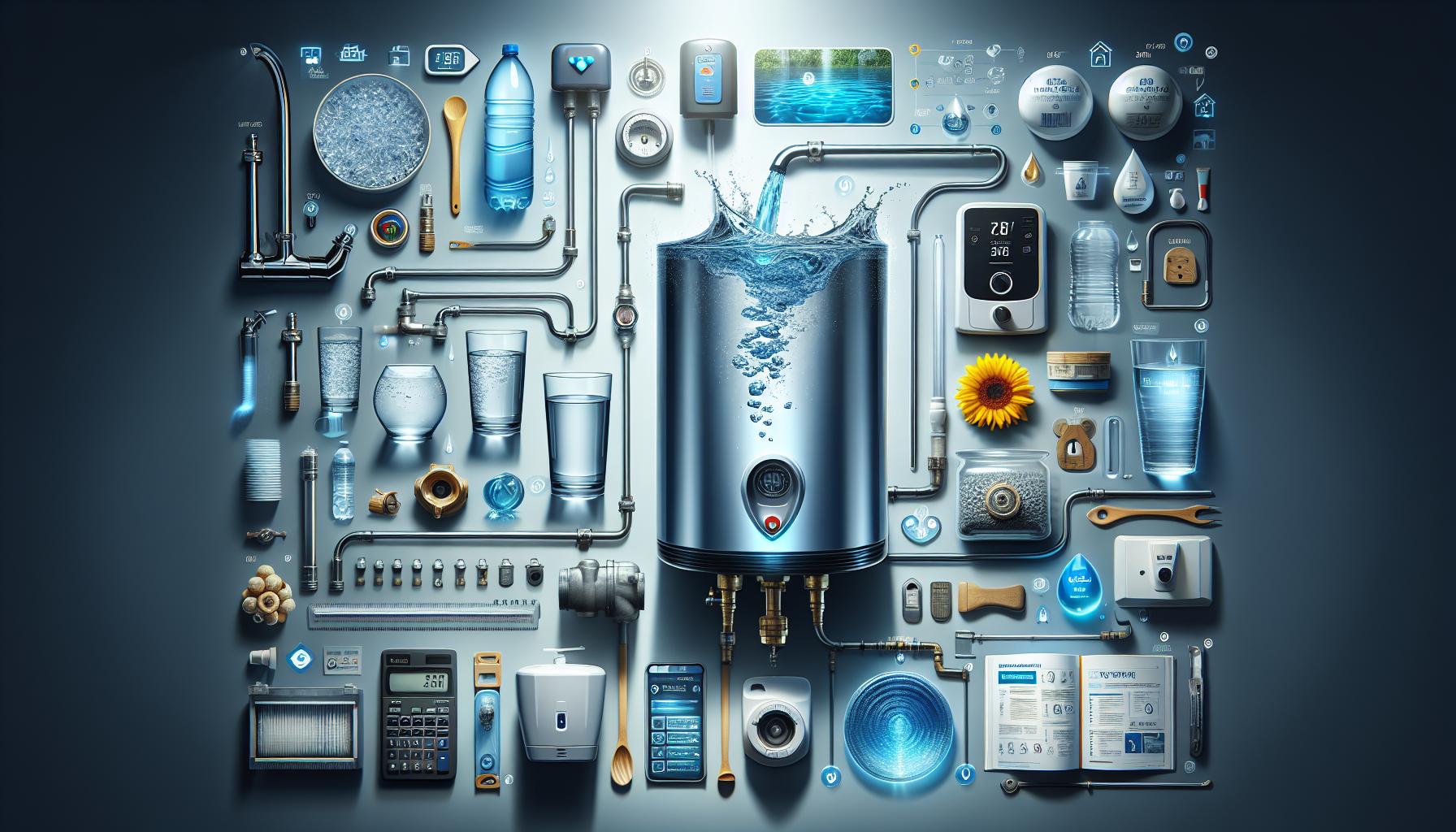
What to Consider When Searching for Your Water Heater
When it comes to water heaters, the right choice can significantly affect both your comfort and utility bills. Whether you’re replacing an old unit or considering a new installation, understanding the various factors involved in selecting the ideal water heater is crucial. The location of your water heater, the type of unit you choose, and the demands of your household can all play a pivotal role in determining the best fit for your needs.
Type of Water Heater
One of the first decisions you’ll need to make is the type of water heater that suits your home. There are several options, each with its advantages and disadvantages:
- Tankless Water Heaters: These provide hot water on demand and save space, ideal for smaller homes.
- Conventional Storage Water Heaters: Commonly seen with tanks that store a specific volume of hot water; the fuel type (gas, electric, solar) also matters.
- Heat Pump Water Heaters: Highly energy-efficient, using electricity to transfer heat rather than generate it directly.
- Solar Water Heaters: Harness solar energy, becoming increasingly popular for their sustainability and potential cost savings on energy bills.
Consider your household’s hot water consumption patterns. For example, if your family often uses multiple hot water sources simultaneously (showers, dishwashers, etc.), a conventional storage unit with a larger tank may be more beneficial.
Location and Accessibility
Understanding where water heaters are typically located in homes can greatly enhance your search. Most water heaters are situated in utility rooms, basements, or garages. When searching for your specific model, consider the following factors:
- Space Considerations: Ensure there’s sufficient room for the unit and necessary maintenance access.
- Ventilation Needs: Some heaters require venting, which may influence where you can place the unit within your home.
- Proximity to Water Fixtures: The closer your heater is to the main fixtures like bathrooms and kitchens, the quicker hot water can be delivered, enhancing comfort.
Energy Efficiency and Costs
Another critical aspect to consider is the energy efficiency of your water heater. Units that have higher energy efficiency ratings can lead to substantial savings on your monthly utility bills. When evaluating options:
| Type of Water Heater | Energy Efficiency Rating | Running Costs (Annual) |
|---|---|---|
| Tankless | Higher (up to 98%) | $200-$300 |
| Conventional Storage | Medium (around 60%-85%) | $300-$500 |
| Heat Pump | Very High (up to 300%) | $150-$250 |
| Solar | Very High (dependent on sunlight) | $100-$200 |
Make sure to factor in installation costs along with the initial price of the water heater. Incentives such as tax credits for energy-efficient models can also be a game-changer.
By considering these practical elements, you can navigate the complexities of your water heater selection and ensure you find the perfect fit for your home and lifestyle.
Tips for Maintaining Easy Access to Your Water Heater
When it comes to the functionality of your home, water heaters play a crucial role, yet they often remain in the shadows. Keeping your water heater accessible is essential for maintenance and emergencies. Easy access not only saves time but also ensures you can promptly address any issues that arise. Here are several practical tips to maintain easy access to your water heater, allowing you to manage it effectively without having to conduct a treasure hunt every time you need to check on it.
Organize Around Your Water Heater
Create a clutter-free zone around your water heater to ensure that you can reach it with ease. By organizing the space, you reduce the risk of knocking items over or causing obstructions should you need to reach the unit. Here are some steps to consider:
- Clear Out Unnecessary Items: Regularly assess what’s stored near your water heater and remove any items that don’t belong. Boxes, tools, or other household items can obstruct access.
- Designate a Maintenance Zone: If you have a dedicated spot for tools related to home maintenance, keep water heater supplies—such as optional filters, pipes, or replacement parts—close by.
- Use Shelving Wisely: If shelves are necessary, ensure they are placed high enough to avoid blocking the heater. This ensures you can still access the unit for maintenance and inspections.
Consider Location and Accessibility
If you have the opportunity to choose where your water heater will be located within your home, choose a space that prioritizes accessibility. In many homes, they are hidden away in basements, attics, or closets. However, if installing a new water heater, think about:
- Convenient Location: Position your water heater in an area that allows for easy access, such as a utility room near the laundry facilities.
- Wider Doorways: Ensure that the entry point to the space can accommodate your water heater for any future repairs or replacements. A space with a wider doorway allows technicians to work efficiently.
- Proper Ventilation: Good airflow around the unit not only helps prevent overheating but makes it easier for you or a technician to conduct maintenance checks.
Regular Routine Checks
Establishing a regular maintenance routine can help keep your water heater in top condition, while ensuring easy access is part of the process. Incorporate these steps into your home maintenance schedule:
- Monthly Visual Inspections: Check for any signs of leaks, corrosion, or buildup around the unit. Addressing these early can prevent major repairs later on.
- Annual Professional Checkup: Hire a professional to conduct an annual inspection. They can efficiently assess accessibility along with functionality.
- Keep Documentation Handy: Maintain a folder or digital file with documents related to your water heater’s maintenance. This can include warranties, installation manuals, and historical data on repairs.
By following these actionable tips, you can ensure that your water heater remains easily accessible, allowing for efficient management and maintenance. Not only will this enhance the longevity of your unit, but it can also save you frustrations in the long run.
Safety Considerations Around Your Water Heater Location
Keeping your home safe involves proactive measures, especially when it comes to large appliances like water heaters. Many homeowners may overlook the importance of proper water heater placement and safety considerations, but the location of these devices can significantly impact your home’s safety and efficiency. Understanding the potential hazards and the best practices for placement can help avoid accidents and ensure your water heater operates optimally.
Location Matters
When determining where to locate your water heater, it’s essential to consider the environment surrounding it. Placing your water heater in a well-ventilated area reduces the risk of overheating and helps prevent the buildup of dangerous gases. Ensure that the location is free from clutter and any combustible materials that could pose a fire hazard. Common locations for water heaters include basements, garages, and utility rooms, but each setting comes with its own considerations.
- Basements: Ensure proper drainage and ventilation to prevent moisture buildup.
- Garages: Keep away from flammable materials and consider installing a protective barrier.
- Utility Rooms: Avoid stacking items around the heater for easy access and safety.
Safety Precautions
In addition to the right location, implementing safety precautions is crucial. Regular maintenance checks can prevent potential hazards. Homeowners should inspect their water heaters for signs of leaks or corrosion. Furthermore, installing safety devices, such as pressure relief valves, can prevent dangerous situations. If your water heater is located near living spaces, consider installing carbon monoxide detectors in the vicinity to alert you to any gas leaks.
Accessibility is Key
Ensure that the area around your water heater is easily accessible for maintenance and emergency situations. This approach not only makes routine checks simpler but is also vital during an emergency. Keeping pathways clear of obstructions will help you quickly reach the heater if a problem arises. Having your water heater installed on a platform can further protect it from potential flooding situations, especially in basements or areas prone to water accumulation.
By taking these safety considerations into account regarding your water heater’s location, you can ensure that it operates effectively while minimizing risks to your home and family. Remember, if you’re unsure of the best practices, consulting a professional can provide tailored advice to enhance your home safety measures relating to where water heaters are located in homes.
Why Water Heater Placement Matters for Efficiency and Maintenance
Water heater placement can significantly impact the efficiency of your system and the ease of maintenance. Understanding how the location of your water heater affects its performance not only helps homeowners maximize energy savings but also prolongs the lifespan of the unit. For instance, placing a water heater in a basement or a poorly insulated area can cause it to work overtime, leading to increased energy bills and potential wear and tear that could result in costly repairs.
Energy Efficiency
The effectiveness of a water heater is closely tied to its location. Here are some considerations:
- Proximity to Hot Water Outlets: The closer the heater is to your taps and appliances, the less time hot water spends traveling through pipes. This means less energy is wasted, as you won’t need to run the taps for long periods to get hot water.
- Insulation: A water heater located in an insulated, climate-controlled space will retain heat better than one placed in an unconditioned area like a garage. Insulating the pipes can also reduce heat loss.
- Ventilation: Proper ventilation is key for gas water heaters. A cramped space can affect combustion, reducing efficiency and posing safety risks.
Maintenance Accessibility
Regular maintenance is crucial for optimal performance and longevity of water heaters. The ease of access for routine checks and repairs is influenced by placement. Ideally, the heater should be located in an area that allows for:
- Room to Service: Ensure there is enough space around the unit so that a technician can perform necessary maintenance tasks without difficulty.
- Safety Compliance: Local codes often dictate placement to ensure safety. For example, water heaters should be elevated in flood-prone areas to minimize risks.
Consider creating a table to evaluate common placements based on efficiency and maintenance ease:
| Location | Energy Efficiency | Maintenance Access |
|---|---|---|
| Basement | Moderate (mostly insulated) | Limited (often cramped) |
| Garage | Low (drafty, cold) | Moderate (spacious but may be hard to reach) |
| Utility room | High (controlled climate) | High (easily accessible) |
| Attic | Low (heat escapes easily) | Low (difficult access) |
Ultimately, selecting the right location ensures that you not only enjoy immediate access to hot water but also invest in long-term savings and reliability. Understanding the implications of “Where Are Water Heaters Located in Homes? Find Yours Fast” will empower you to make informed decisions for your home’s comfort and efficiency.
Frequently Asked Questions
Where Are Water Heaters Located in Homes? Find Yours Fast?
Water heaters are typically found in places like basements, garages, or utility closets. These areas provide enough space for installation and maintenance, away from living spaces. Understanding the common locations can help you find your water heater quickly.
If your home is multi-story, water heaters are often located in basements or on lower floors to maintain efficiency in hot water delivery. In smaller homes or apartments, they might be hidden in closets, cabinets, or even underneath kitchen sinks. If you’re unsure, check the homeowner’s manual or contact a local plumbing professional.
What is the function of a water heater?
The main function of a water heater is to heat water for residential use, including bathing, cooking, and cleaning. This appliance ensures that hot water is readily available whenever you need it.
Water heaters can come in various forms, including tankless, solar, and traditional tank models. In essence, they work by heating water through electrical elements, gas flames, or solar collectors. If you’re curious about upgrading your system, you might explore options for energy-efficient models.
Why does the location of my water heater matter?
The location of your water heater impacts both efficiency and maintenance access. A well-placed heater minimizes heat loss and maximizes hot water delivery to your faucets.
Choosing the right location can also make repairs easier and reduce the chance of potential leaks causing damage to your home. For more in-depth information on keeping your water heater efficient, take a look at our article on water heater efficiency tips.
Can I move my water heater to a different location?
Yes, you can move your water heater, but it often requires professional help and a permit. This process involves relocating plumbing and electrical wiring, ensuring safety and compliance with local codes.
Consider factors like accessibility, ventilation, and proximity to hot water outlets when deciding on a new location. Before making any decisions, consult with a licensed plumber to understand the feasibility and associated costs of relocating your heater.
How do I know if my water heater is malfunctioning?
Signs of a malfunctioning water heater include fluctuating water temperatures, unusual noises, or visible leaks. Any of these problems can signal that service is required.
Regular maintenance, such as flushing the tank and checking temperature settings, can prolong your heater’s lifespan. If you notice any warning signs, it’s best to consult a professional to diagnose the issue before it escalates.
What types of water heaters are commonly found in homes?
The most common types of water heaters are tankless, storage tank, heat pump, and solar water heaters. Each type has its own set of advantages and can fit different household needs.
For example, tankless water heaters provide hot water on demand and save space, while traditional storage tank heaters can provide larger volumes of hot water. Understanding these differences can help you select the right system for your home.
Is it necessary to maintain my water heater?
Yes, regular maintenance is essential for prolonging the life of your water heater and ensuring it operates efficiently. This includes tasks like flushing the tank, checking the anode rod, and inspecting for leaks.
Neglecting maintenance can lead to sediment buildup, reduced efficiency, and potential breakdowns. Establishing a routine maintenance plan with a professional can help keep your system running smoothly and save you money over time.
In Summary
In summary, knowing where water heaters are typically located in homes can save you time and trouble when maintenance or emergencies arise. These essential appliances are most often found in basements, attics, or utility closets, depending on the design of your home. By being aware of their common placements, you can quickly check for leaks or issues, ensuring hot water is always available when you need it. We encourage you to explore further resources or reach out with any questions you might have about water heaters. Empower yourself with knowledge, and tackle any water-related challenges with confidence!

